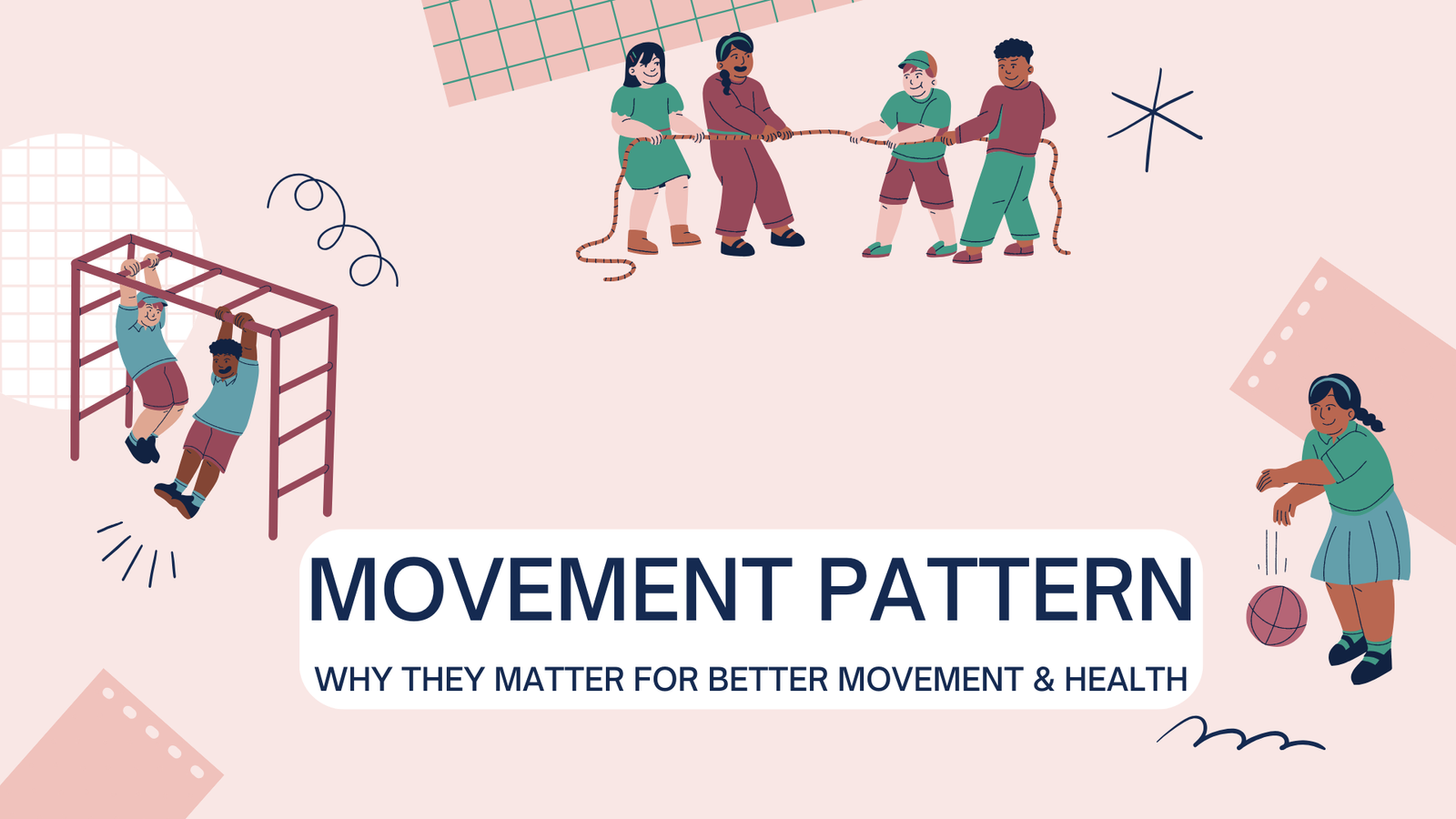Movement patterns are the fundamental ways our bodies move, involving sequences and coordination of muscles, joints, and nerves. Understanding and improving these patterns can lead to better movement efficiency, reduced risk of injury, and improved overall health. In this article, we’ll explore the significance of movement patterns and how they impact our daily lives and long-term well-being.
What Are Movement Patterns?
Movement patterns are actually the ways in which we move our bodies for our daily tasks. These are the natural movements of the body that we all do every day in our lives, like walking, getting up-sitting, running, or lifting anything. These patterns are the result of the coordination of the body’s muscles, joints, and nerves.
If you take a simple example, like bending, your back, hips, and legs work together. If this movement is not done correctly, you can get injury or pain. That’s why it’s very important to understand movement patterns and practice them correctly.
This is important not just for athletes but for everyone, whether you’re a desk job or a physical laborer. Correct movement patterns improve your health, reduce injuries, and make you more active and flexible.
Examples of Movement Patterns:
Push: Movements such as push-ups and bench presses.
Pull: Pull-ups or rowing exercises.
Squat: Sitting down or performing squats.
Lunge: Moving a leg forward or backward.
Twist: Rotational motions such as turning to take hold of something.
Walk/Run: Basic movement actions.
Recognizing these patterns can point out what’s strong or weak and lead to corrective actions.
Why Movement Patterns Matter:
1. In Preventing Injuries:
Poor movement patterns lead to imbalances, causing strain on joints and muscles. For instance, poor squatting patterns cause strain on the knees or the lower back. Correcting the patterns minimizes overuse injuries.
2. Athletic Performance:
Good athletes depend on good movement patterns for optimal performance. Correct coordination and muscle activation result in speed, strength, and agility, making them the best in the competition.
3. Enhancing Everyday Functionality:
Good movement patterns make everyday life easier: from bending down to reach for groceries in the back of the refrigerator to climbing stairs, well-executed movements reduce fatigue and enhance one’s quality of life.
4. Supports Long-Term Health:
Poor repetitive movement patterns will eventually cause chronic problems such as arthritis or back pain. Addressing these patterns earlier on prevents long-term damage.
Examining Your Movement Patterns:
It is very important to understand and analyze your movement patterns so that you know how you are using your body. This step helps you to see where your movements are not right, and in which area you need improvement.
For this process, you can carefully observe your daily activities. For example, when you get up, walk, or pick up something, what position is your body in? Is your posture correct? Is your weight being distributed evenly?
You can look at yourself in a mirror, or record a video to analyze your movements. If you feel excessive strain in any position, or you are using your muscles in the wrong way, this is a sign that you need to improve your movement patterns.
This examination helps you to understand imbalances in the body. Once you identify where the problems are occurring, you can improve your movements through exercises and stretches, which improve your health and fitness.
Professional Evaluations:
Professional evaluations mean that you get help from an expert or professional to assess your movement patterns. These experts are people who are trained to understand your body and movements, such as physiotherapists, fitness trainers, or occupational therapists.
When you have a professional evaluate your movements, they carefully examine your body and look at how your muscles, joints, and bones are working. They also identify areas where you need improvement, such as poor posture, muscle imbalances, or improper movement techniques.
This evaluation gives you a detailed and accurate analysis that you cannot do on your own. Professional evaluations provide you with personalized advice and exercises that are tailored to your specific needs. This way you can improve your movement, avoid injuries, and improve your overall health.
Tips to Enhance Movement Patterns:
1. Strengthen Weaker Muscles:
Pinpoint the muscles that could be inactive. For instance, inactive glutes will create faulty hip movements when one attempts squats.
2. Increase Mobility:
Tight muscles restrict movement. Stretching and mobility exercises, such as yoga or foam rolling, can be of help.
3. Correct Technique:
Focus on proper form rather than intensity. Use mirrors or record videos to ensure your movements correspond with the correct techniques.
4. Functional Training:
Functional training simulates real-life movements that will help you in the improvement of the patterns used in daily activities.
5. Professional Guidance:
Personal trainers and physical therapists can give individualized exercises and corrections over your movement patterns.
Conclusion:
Movement patterns are the foundation of all physical activity, affecting everything from daily tasks to athletic performance. By understanding and improving these patterns, you can enhance your health, prevent injuries, and achieve better functionality. With proper assessment, targeted exercises, and professional guidance, better movement, and health are within reach.
FAQs:
1. What are the most common movement patterns?
The most common patterns include pushing, pulling, squatting, lunging, twisting, and walking.
2. How do poor movement patterns develop?
They often result from sedentary lifestyles, muscle imbalances, or previous injuries.
3. Can movement patterns be corrected?
Yes, with consistent practice, exercises, and professional guidance, movement patterns can be improved.
4. Why are movement patterns important for athletes?
Efficient patterns enhance performance, reduce injury risk, and ensure optimal energy use.
5. How do I know if my movement patterns are faulty?
Look for signs like pain during movement, limited range of motion, or uneven muscle use.
6. What exercises help improve movement patterns?
Exercises like squats, deadlifts, lunges, and core stability drills are excellent for enhancing patterns.
